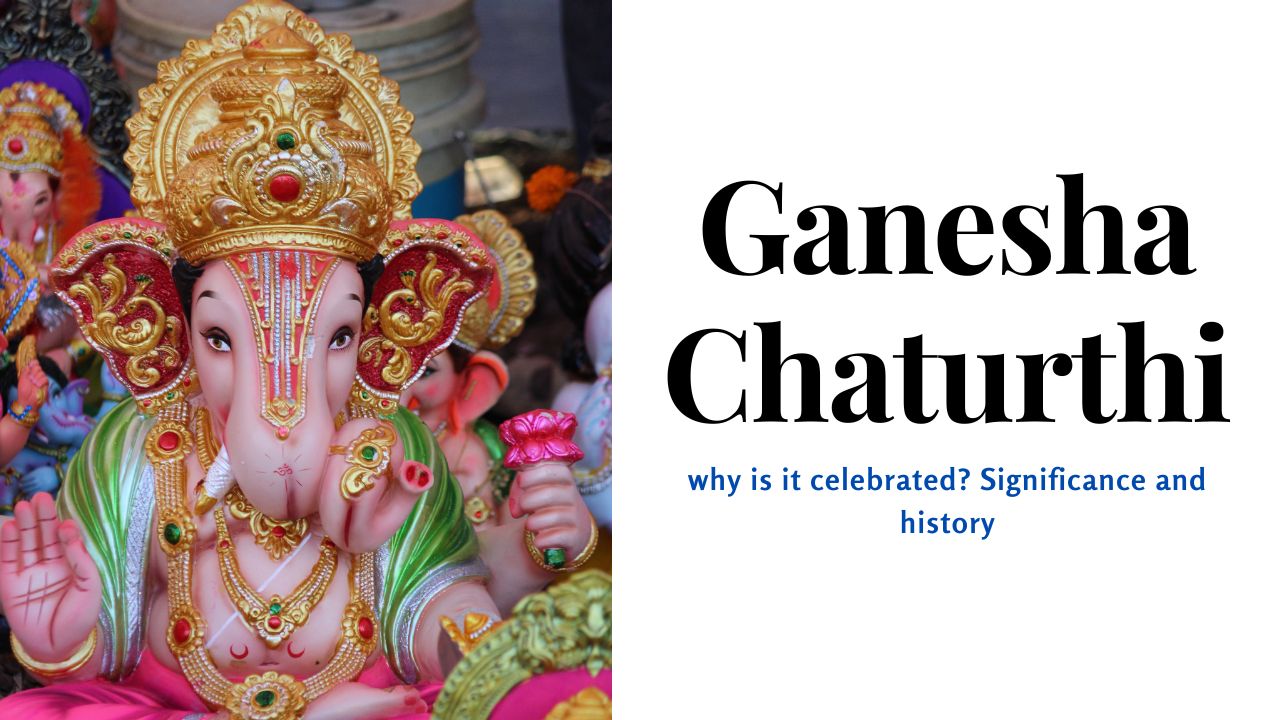Ganesha Chaturthi or Vinayak Chaturthi is celebrated across India every month on the fourth day of Shukla Paksha. During Vinayak Chaturthi, millions of devotees worship Lord Ganesha
Ganesh Chaturthi is a Hindu festival celebrated to honor Lord Ganesha who is considered the remover of obstacles, the patron of arts and sciences, and the god of wisdom and intellect.
The festival is observed with great enthusiasm and devotion by Hindus in many parts of India and around the world.
Celebrating Ganesh Chaturthi has lot of significance and some important points to note are:
- Birth of Lord Ganesha: Ganesh Chaturthi marks the birth anniversary of Lord Ganesha. On this day, Lord Ganesha is believed to descend to Earth to bestow his blessings and fulfill the wishes of his devotees.
- Overcoming obstacles: Lord Ganesha is revered as the remover of obstacles and the god of new beginnings. He is worshipped before starting any important task or undertaking, seeking his blessings for success and the removal of obstacles that may come their way.
- Cultural significance: Ganesh Chaturthi is deeply rooted in Indian culture and traditions. It provides an opportunity for families and communities to come together, celebrate, and strengthen social bonds. The festival involves various rituals, prayers, and cultural performances, including the singing of devotional songs, dancing, and the immersion of Ganesha idols in water bodies.
- Symbolism: Lord Ganesha is depicted with an elephant’s head, which symbolizes wisdom, intelligence, and auspiciousness.
- His large ears signify attentiveness,
- while his small eyes represent concentration.
- The broken tusk symbolizes sacrifice and the need to overcome one’s ego.
- Ganesh Chaturthi serves as a reminder to cultivate these qualities and seek the blessings of Lord Ganesha in our lives.
- Environmental awareness: In recent years, there has been a growing emphasis on celebrating Ganesh Chaturthi in an eco-friendly manner. Traditionally, idols made of clay were immersed in water bodies after the festival, but the use of non-biodegradable materials like plaster of Paris and chemical-based paints led to environmental pollution. Many communities now encourage the use of eco-friendly idols and promote the immersion in artificial ponds to minimize the impact on the environment.
It is a common belief among Hindus that observing fast on Vinayak Chaturthi or Ganesh Chaturthi brings prosperity to the house.
History behind Vinayak Chaturthi ( Ganesh Chaturthi history )
So Ganesha Chaturthi, also known as Vinayaka Chaturthi, celebrates the birth ( & rebirth) of Lord Ganesha, the elephant-headed deity. T
he mythology behind Ganesha Chaturthi is rooted in Hindu scriptures and legends.
According to our mythology, Ganesha is the son of Lord Shiva, the destroyer, and Ma Parvati, the divine mother.
The story goes that once Parvati created a figure out of turmeric paste (thoug there are different versions here ) and breathed life into it, forming a young boy.
She loved the boy and considered him her son.
On one occasion, Parvati was taking a bath and asked Ganesha to guard the entrance to her chambers.
Meanwhile, Lord Shiva returned from his meditation and tried to enter Parvati’s chamber, but Ganesha, being a loyal guardian, stopped him and refused to let him in.
Shiva, not recognizing Ganesha as his own son, became enraged and engaged in a fierce battle with him.
During the battle, Lord Shiva severed Ganesha’s head from his body with his trident.
When Ma Parvati saw this, she was devastated and demanded that Ganesha be brought back to life.
Lord Shiva, remorseful for his actions, instructed his followers to bring the head of the first living being they encountered.
The followers returned with the head of an elephant, and Lord Shiva attached it to Ganesha’s body, bringing him back to life.
He declared Ganesha as his own son and bestowed blessings upon him. Ganesha was given the title of “Vighnaharta,” meaning the remover of obstacles, and was revered as the deity who brings good fortune, wisdom, and prosperity.
Ganesha Chaturthi is celebrated to honor the birth of Lord Ganesha and to seek his blessings.
Significance of Vinayak Chaturthi (Ganesha Chaturthi )
The festival typically lasts for 10 days, with the installation of Ganesha idols in homes and public pandals (temporary structures).
Devotees offer prayers, sing hymns, perform rituals, and indulge in festivities, including music, dance, and processions.
On the final day of the festival, known as Ananta Chaturdashi, the idols of Lord Ganesha are carried in grand processions and immersed in water bodies, symbolizing the departure of Ganesha and his return to Mount Kailash, his celestial abode.
This is called “Ganesh Visarjan.”
Ganesha Chaturthi holds immense cultural and religious significance for Hindus, as it is believed that invoking Lord Ganesha’s presence during this festival brings prosperity, removes obstacles, and blesses individuals with success and wisdom.
Devotees believe that keeping a fast on Vinayak Chaturthi brings success in your life. I
You may also like: Ganpatipule Temple Ratnagiri – Most famous Lord Ganpati Temple in Ratnagiri District

